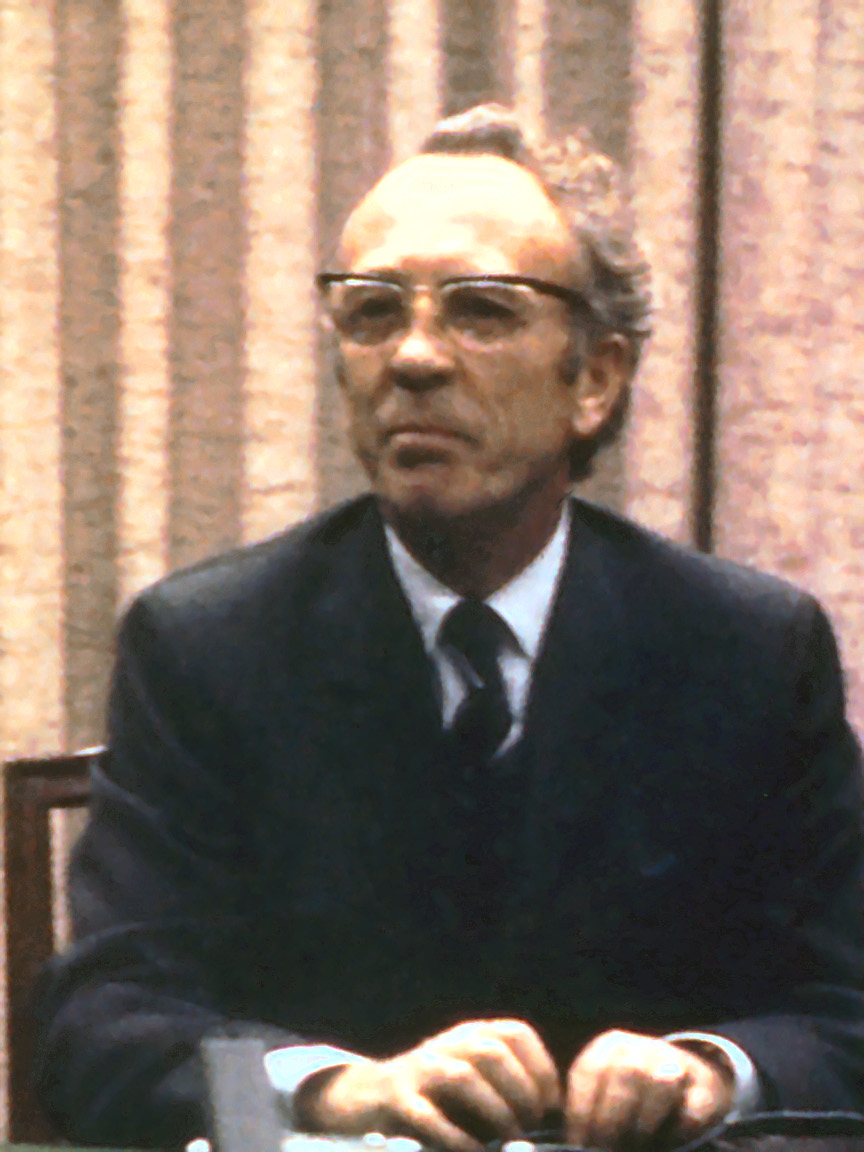|
1996 Canadian Federal Budget
The Canadian federal budget for fiscal year 1996–97 was presented by Minister of Finance Paul Martin in the House of Commons of Canada on 6 March 1996. It is the first Canadian federal budget that was identified with an unofficial subtitle: ''Securing the Future''. Taxes Personal income taxes Incentives for investments in Labour-sponsored venture capital corporation (LSVCCs) are tightened: * The tax credit rate is cut to 15% from 20% ; * The maximum yearly credit is cut from $1,000 to $525 ; * Minimum holding periods to benefit from the LSVCCs credit is increased from 5 to 8 years. The budget proposes to remove the 7-year limit on the carry-forward of unused RRSP room. Limits for RRSP contributions are frozen until 2003 and legislated through 2005, and the age limit for contributions is to be reduced from 71 to 69. The maximum amount of the Working Income Supplement (WIS) was increased to $750 in July 1997 and $1,000 in July 1998. Child Support Payments tax treatment Chi ... [...More Info...] [...Related Items...] OR: [Wikipedia] [Google] [Baidu] |
35th Canadian Parliament
The 35th Canadian Parliament was in session from January 17, 1994, until April 27, 1997. The membership was set by the 1993 federal election on October 25, 1993, and it changed only somewhat due to resignations and by-elections until it was dissolved prior to the 1997 election. It was controlled by a Liberal Party majority under Prime Minister Jean Chrétien and the 26th Canadian Ministry. The Official Opposition was the ''Bloc Québécois'', led first by Lucien Bouchard, then by Michel Gauthier, and finally by Gilles Duceppe. The Speaker was Gilbert Parent. See also list of Canadian electoral districts 1987–96 for a list of the ridings in this parliament. There were two sessions of the 35th Parliament: Party standings The party standings as of the election and as of dissolution were as follows: Members of the House of Commons Members of the House of Commons in the 35th parliament arranged by province. Newfoundland :* Brian Tobin left parliament in 1996 ... [...More Info...] [...Related Items...] OR: [Wikipedia] [Google] [Baidu] |
Canada Customs And Revenue Agency
Canada Customs and Revenue Agency (CCRA; , ''ADRC'') was a department of the government of Canada and existed from November 1, 1999 until December 12, 2003. It was created from the merging of Revenue Canada with Canada Customs ().Sources of Federal Government and Employee Information " ''Canada Revenue Agency''. Ottawa: Government of Canada. 9 July 2017.Kagan, Julia. 9 April 2019. Canada Revenue Agency (CRA) " '' |
1996 In Canadian Politics
1996 was designated as: * International Year for the Eradication of Poverty Events January * January 8 – A Zairean cargo plane 1996 Air Africa crash, crashes into a crowded market in the center of the capital city of the Democratic Republic of the Congo, Kinshasa, killing around 300 people. * January 9–January 20, 20 – Serious fighting breaks out between Russian soldiers and rebel fighters in Chechnya. * January 11 – Ryutaro Hashimoto, leader of the Liberal Democratic Party (Japan), Liberal Democratic Party, becomes Prime Minister of Japan. * January 13 – Prime Minister of Italy, Italy's Prime Minister, Lamberto Dini, resigns after the failure of all-party talks to confirm him. New talks are initiated by President Oscar Luigi Scalfaro to form a new government. * January 14 – Jorge Sampaio is elected President of Portugal. * January 16 – President of Sierra Leone Valentine Strasser is deposed by the chief of defence, Julius Maada Bio. B ... [...More Info...] [...Related Items...] OR: [Wikipedia] [Google] [Baidu] |
Canadian Budgets
Canadians () are people identified with the country of Canada. This connection may be residential, legal, historical or cultural. For most Canadians, many (or all) of these connections exist and are collectively the source of their being ''Canadian''. Canada is a multilingual and multicultural society home to people of groups of many different ethnic, religious, and national origins, with the majority of the population made up of Old World immigrants and their descendants. Following the initial period of French and then the much larger British colonization, different waves (or peaks) of immigration and settlement of non-indigenous peoples took place over the course of nearly two centuries and continue today. Elements of Indigenous, French, British, and more recent immigrant customs, languages, and religions have combined to form the culture of Canada, and thus a Canadian identity and Canadian values. Canada has also been strongly influenced by its linguistic, geographic, a ... [...More Info...] [...Related Items...] OR: [Wikipedia] [Google] [Baidu] |
Progressive Conservative Party Of Canada
The Progressive Conservative Party of Canada (PC; ) was a Centrism, centre to centre-right List of federal political parties in Canada, federal political party in Canada that existed from 1942 to 2003. From Canadian Confederation in 1867 until 1942, the Conservative Party of Canada (1867–1942), original Conservative Party of Canada participated in numerous governments and had multiple names. In 1942, its name was changed to the Progressive Conservative Party under the request of newly elected party leader Premier of Manitoba, Premier John Bracken of Manitoba, a former member of the Progressive Party of Manitoba. In the 1957 Canadian federal election, 1957 federal election, John Diefenbaker carried the party to their first victory in 27 years and 1958 Canadian federal election, the following year, led the party to the largest federal electoral landslide in history. During his tenure, human rights initiatives were achieved, most notably the Canadian Bill of Rights, Bill of Righ ... [...More Info...] [...Related Items...] OR: [Wikipedia] [Google] [Baidu] |
New Democratic Party (Canada)
The New Democratic Party (NDP; , ) is a federal List of political parties in Canada, political party in Canada. Widely described as Social democracy, social democratic,The party is widely described as social democratic: * * * * * * * * * * * * * The Editors of ''Encyclopædia Britannica'' (April 28, 2025)."New Democratic Party" ''Encyclopædia Britannica''. Retrieved April 28, 2025 the party sits at the Centre-left politics, centre-left to Left-wing politics, left-wing of the Canadian political spectrum, generally to the left of the Liberal Party of Canada, Liberal Party. The party was founded in 1961 by the Co-operative Commonwealth Federation and the Canadian Labour Congress. As of 2025, it is the fourth-largest party in the House of Commons, with seven seats. The federal and provincial (or territorial) level NDPs are more integrated than other political parties in Canada, and have shared membership. The NDP has never won the largest share of seats at the federal ... [...More Info...] [...Related Items...] OR: [Wikipedia] [Google] [Baidu] |
Reform Party Of Canada
The Reform Party of Canada () was a right-wing populism, right-wing populist and conservative List of federal political parties in Canada, federal political party in Canada that existed from 1987 to 2000. Reform was founded as a Western Canada-based Western alienation, protest movement that eventually became a populist conservative party, with strong Social conservatism in Canada, social conservative and Fiscal conservatism in Canada, fiscal conservative elements. It was initially motivated by profound Western Canadian discontent with the Progressive Conservative Party of Canada, Progressive Conservative Party (PC Party) government of Brian Mulroney. Led by its founder Preston Manning throughout its existence, Reform was considered a populist movement that rapidly gained popularity and momentum in Western Canada during the late 1980s and early 1990s. In addition to attracting social conservatives, the party was popular among Western Canadians who were disillusioned with Mulroney ... [...More Info...] [...Related Items...] OR: [Wikipedia] [Google] [Baidu] |
Bloc Québécois
The Bloc Québécois (, , BQ) is a centre-left politics, centre-left and list of federal political parties in Canada, federal political party in Canada devoted to Quebec nationalism, Quebecois nationalism, social democracy, and the promotion of Quebec sovereignty movement, Quebecois sovereignty. The Bloc was formed in the early 1990s by Member of Parliament (Canada), Members of Parliament (MPs) who defected from the federal Progressive Conservative Party of Canada, Progressive Conservative Party and Liberal Party of Canada, Liberal Party during the collapse of the Meech Lake Accord. Founder Lucien Bouchard had been a cabinet minister in the federal Progressive Conservative government of Brian Mulroney. The Bloc seeks to create the conditions necessary for the political secession of Quebec from Canada and campaigns exclusively within the province during federal elections. The party has been described as social democratic and Quebec sovereignty movement, separatist (or "sovereign ... [...More Info...] [...Related Items...] OR: [Wikipedia] [Google] [Baidu] |
Canada Assistance Plan
The Canada Assistance Plan (CAP) () was a financing program created in 1966 by the 19th Canadian Ministry, Pearson government. The CAP consisted of a cost-sharing arrangement between the federal government and provinces, territories and municipalities whereby the federal government would partially fund eligible social programs. The 1995 Canadian federal budget announced that both the Canada Assistance Plan and the Established Programs Financing would be combined into a new block-fund fiscal arrangement called the Canada Health and Social Transfer starting in 1996-97 fiscal year. Payments with respect to fiscal years ending on March 31, 1996 or before could be made until March 31, 2000. The Canada Assistance Plan therefore officially remained under existence until March 31, 2000. Structure As of the early 1990s, the Canada Assistance Plan consisted of 3 parts (of which only 2 have ever been enacted): * Part I (General Assistance and Welfare Services) under which the federal gover ... [...More Info...] [...Related Items...] OR: [Wikipedia] [Google] [Baidu] |
Established Programs Financing
The Established Programs Financing (EPF) () was a financing program created by the Trudeau government in 1977, to finance the provincially-run healthcare and high-education system, through transfer payments, by cash and tax points. The 1995 Canadian federal budget announced that both the Established Programs Financing and the Canada Assistance Plan would be combined into a new block-fund fiscal arrangement called the Canada Health and Social Transfer starting in 1996–97 fiscal year. History Negotiation and inception (1976-1977) The Established Programs Financing (EPF) arrangements were first presented and proposed to the provinces at a First Minister's Conference on . The first agreement on EPF was reached in 1977 and set to expired in 1987. It stipulated that increases in the program were tied to the growth in the national economy. The agreement was legislated through the ''Federal-Provincial Fiscal Arrangements and Established Programs Financing Act, 1977'' which receive ... [...More Info...] [...Related Items...] OR: [Wikipedia] [Google] [Baidu] |
Canada Health And Social Transfer
The Canada Health and Social Transfer (CHST) was a system of block transfer payments from the Canadian government to provincial governments to pay for health care, post-secondary education and welfare, in place from the 1996–97 fiscal year until the 2004–05 fiscal year. It was split into the Canada Health Transfer (CHT) and Canada Social Transfer (CST) effective April 1, 2004, to provide greater accountability and transparency for federal health funding. Background The CHST was announced in the 1995 Canadian federal budget as an amalgamation of two federal programs prior to 1996: * The Established Programs Financing program, which paid for health care and post-secondary education and was established in 1977; * And the Canada Assistance Plan, which supported social assistance and was established in 1966. Under the Constitution of Canada, health, education and social assistance are all areas of provincial responsibility and authority. The federal government does no ... [...More Info...] [...Related Items...] OR: [Wikipedia] [Google] [Baidu] |



